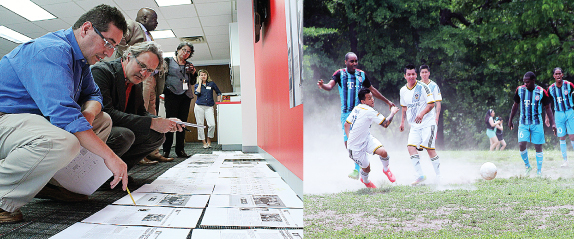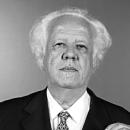
Soccer: Philadelphia and the world
MÁS EN ESTA SECCIÓN
Long the-other-kind-of-football town, there is room in Philadelphia for the world's most popular sport — and for the immigrants who love it
Back in 2010, when the Philadelphia Union was just being established, we shared our excitement at the prospect of a Major League Soccer franchise with a colleague from a different news organization. We'll never forget his gimlet-eyed look, or his words: "This is a football town," he said. "Always has been, always will be. Only the Eagles really matter."
We argued coexistence, but he didn't concede it as a possibility.
Fast forward to 2014 and, no, the Union hasn't replaced the Eagles in the hearts of most Philadelphians, but coexist in our City of Brotherly Love it does — according to Forbes, to the tune of $21.4 million in revenues, $1.1 million of it profit. On game day, the Union's stands and parking lots give evidence to the growing popularity of the world's favorite sport and of its economic promise.
Here, as elsewhere, every soccer fan is preparing for the World Cup (which opens June 12 and runs through July 13) a sporting event that rakes in hundreds of millions of dollars for the host country and for FIFA. In the United States alone, rights to broadcast the games in English are costing ESPN $100 million, while Univision is paying $325 million for the broadcast rights in Spanish. The U.S. market — which didn't even exist until 1998 when the U.S. started airing all the games — is forecast to swell to such an extent that the 2018 World Cup broadcast will cost Fox (U.S. English) $425 million and Telemundo (U.S. Spanish) $600 million.
Much of that expansion in soccer viewership — on television and at stadiums like the Union's in Chester — can be attributed to the changing demographics of our nation. While some Americans still think of soccer as a suburban, middle and high school sport, to a growing number of Americans — many of them immigrants — it is as much the stuff of life and weekly routine as church.
It is the immigrant game par excellence (even though Native Americans played ball games from North America to South since well before the first European landed on continental shores) since it requires little money and can be played anywhere. It demands nothing more than a ball and the determination to play. Some of soccer's world class players — Jairzinho and Romario, for example — have come out of Brazil's poorest neighborhoods and favelas.
However, the reality of professional play and national teams can be quite different. Ever wonder why the U.S. national team has relatively few Latino players even though so many Latino kids start playing soccer before they can tie their shoes? Soccer players here are recruited out of college and expensive clubs where Latinos, as yet, don't have much presence.
But the heart of the game is the same no matter where it is played. Go to FDR park in South Philly on any given Sunday and you'll see whole teams of Latino, African and Asian immigrants playing against each other with a fervor and zest unmatched on better groomed pitches.
Philadelphia is, and has been since its earliest days, an immigrant city. It is easy to imagine the German, Irish, Italian and other European immigrants who settled here in past centuries striving for the perfect pass or exulting after a goal in the same way as their fellow immigrants do today in community parks or vacant lots across the city.
Our city layers its growth, immigrant group after immigrant group, and ultimately (sometimes after great difficulty) we each become identified with, and are identified as part of, the whole.
Much like the World Cup's national teams, we are dependent on each other, even when we come to the game from different regular gigs, wildly divergent circumstances and lives. What matters is our willingness to pass the ball to each other, to set a play, to assist, and to celebrate together the moments when anyone on our team has the opportunity, the inspiration, the sheer guts to risk a shot on goal.
Coexistence — to go back to the conversation of 2010 that opens this — cooperation, collaboration ... these are not only possible, they are the strong foundations upon which we build the community that is Philadelphia.
It is the only way to win.






DEJE UN COMENTARIO:
¡Únete a la discusión! Deja un comentario.